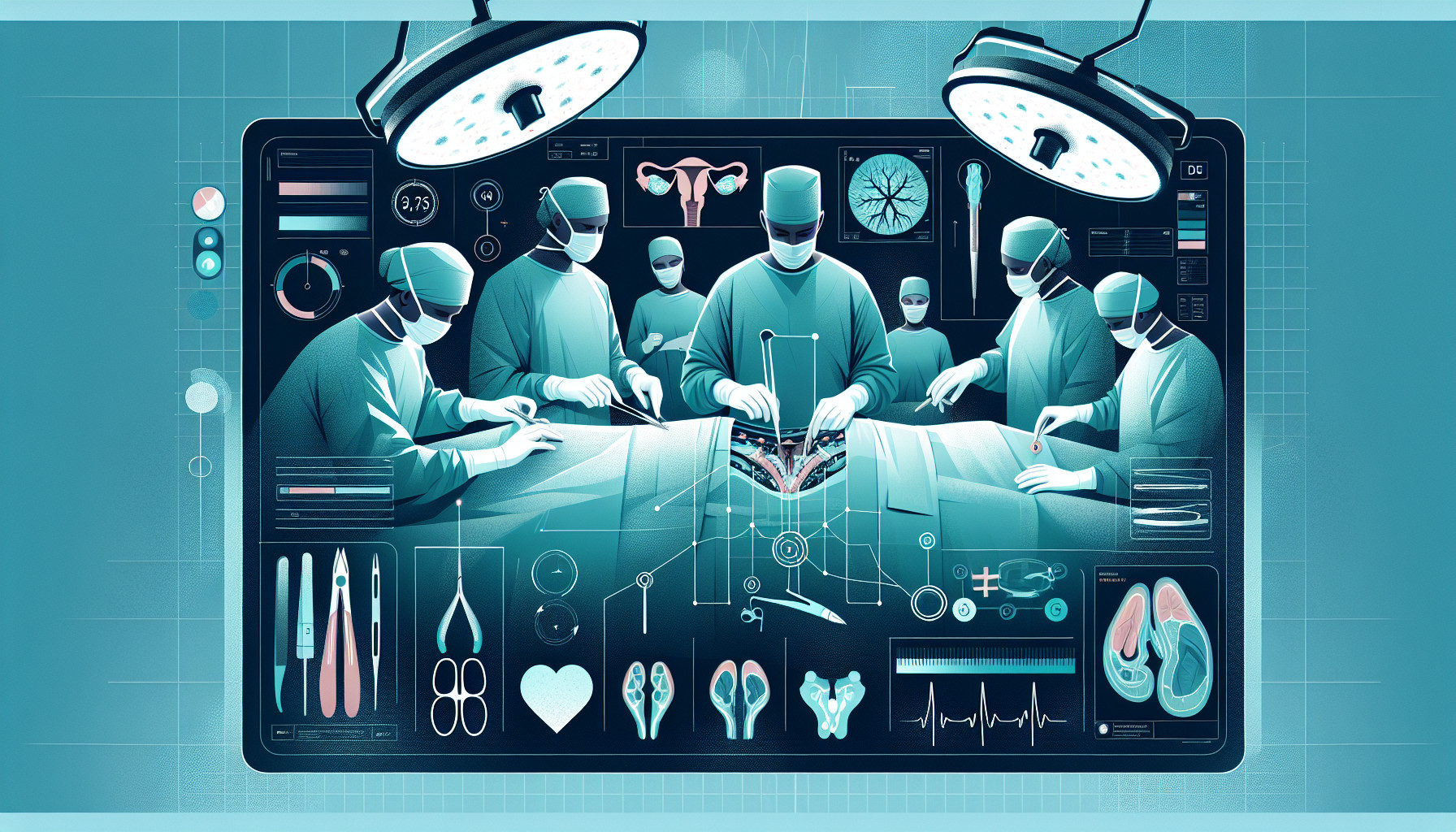Our Summary
This research paper discusses the use of robotic assistance in performing microsurgeries to treat male infertility and chronic scrotal pain. The benefits of this approach include better vision during surgery, improved operation efficiency, absence of hand tremors and results that are as good as traditional methods. The paper focuses on several procedures such as vasectomy reversal, treatment of varicocele (an enlargement of veins in the scrotum), sperm extraction from the testicles, and the removal of nerve supply to the spermatic cord.
FAQs
- What are the benefits of robot-assisted microsurgery in treating male infertility and chronic scrotal pain?
- What types of procedures can be performed using robot-assisted microsurgery?
- How does robot-assisted microsurgery improve surgical efficiency and outcomes for patients?
Doctor’s Tip
One helpful tip a doctor might give a patient about testicular surgery is to follow all pre-operative and post-operative instructions carefully to ensure a successful outcome and optimal recovery. This may include guidelines on medication, wound care, activity restrictions, and follow-up appointments. It is also important to communicate any concerns or changes in symptoms to your healthcare provider promptly.
Suitable For
Patients who may be recommended testicular surgery include those with chronic testicular pain, male infertility, varicoceles, and those seeking vasectomy reversal or testicular sperm extraction for assisted reproduction. Robot-assisted microsurgery may be particularly beneficial for these patients due to its enhanced precision and efficiency compared to traditional methods.
Timeline
Before Testicular Surgery:
- Patient consults with a urologist or specialist to discuss symptoms and potential treatment options.
- Diagnostic tests such as ultrasound or blood work may be performed to evaluate the condition of the testicles.
- Surgery is recommended as a treatment option, and the patient schedules a date for the procedure.
- Pre-operative instructions are given, including fasting guidelines and medication adjustments.
After Testicular Surgery:
- The patient undergoes the robotic-assisted microsurgery procedure, which may include vasectomy reversal, varicocelectomy, testicular sperm extraction, or targeted denervation of the spermatic cord.
- Post-operative care instructions are provided, including pain management and wound care.
- Follow-up appointments are scheduled to monitor healing and effectiveness of the surgery.
- Recovery time varies depending on the type of surgery performed, but most patients can return to normal activities within a few weeks.
- Long-term outcomes are monitored to assess the success of the surgery in improving symptoms such as chronic testicular pain or male infertility.
What to Ask Your Doctor
- What is the specific reason for recommending testicular surgery?
- What are the potential risks and complications associated with the surgery?
- What is the success rate of the procedure in terms of improving fertility or reducing pain?
- Will I need to undergo any additional tests or procedures before the surgery?
- What is the expected recovery time and post-operative care plan?
- Are there any alternative treatment options available?
- How experienced are you in performing this specific type of testicular surgery?
- Will I be able to have children after the surgery?
- Will I need any follow-up appointments or monitoring after the surgery?
- Are there any lifestyle changes or restrictions I should be aware of before or after the surgery?
Reference
Authors: Ergun O, Gudeloglu A, Parekattil SJ. Journal: J Endourol. 2022 Sep;36(S2):S48-S60. doi: 10.1089/end.2022.0259. PMID: 36154453
